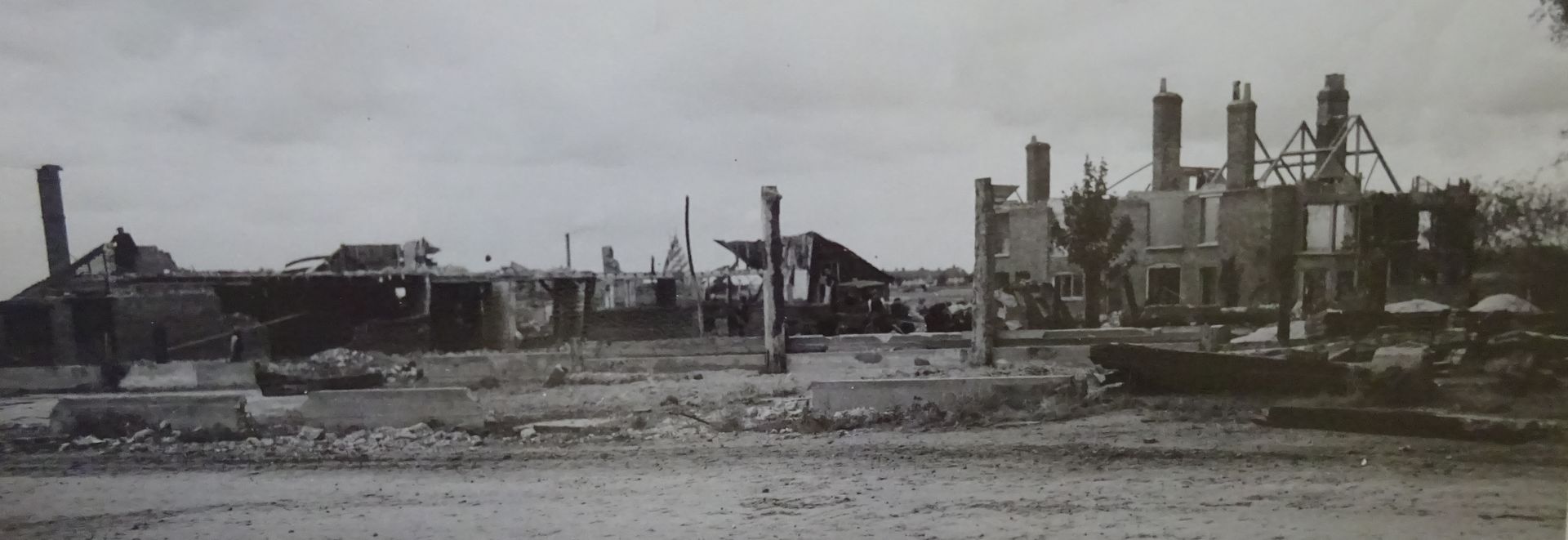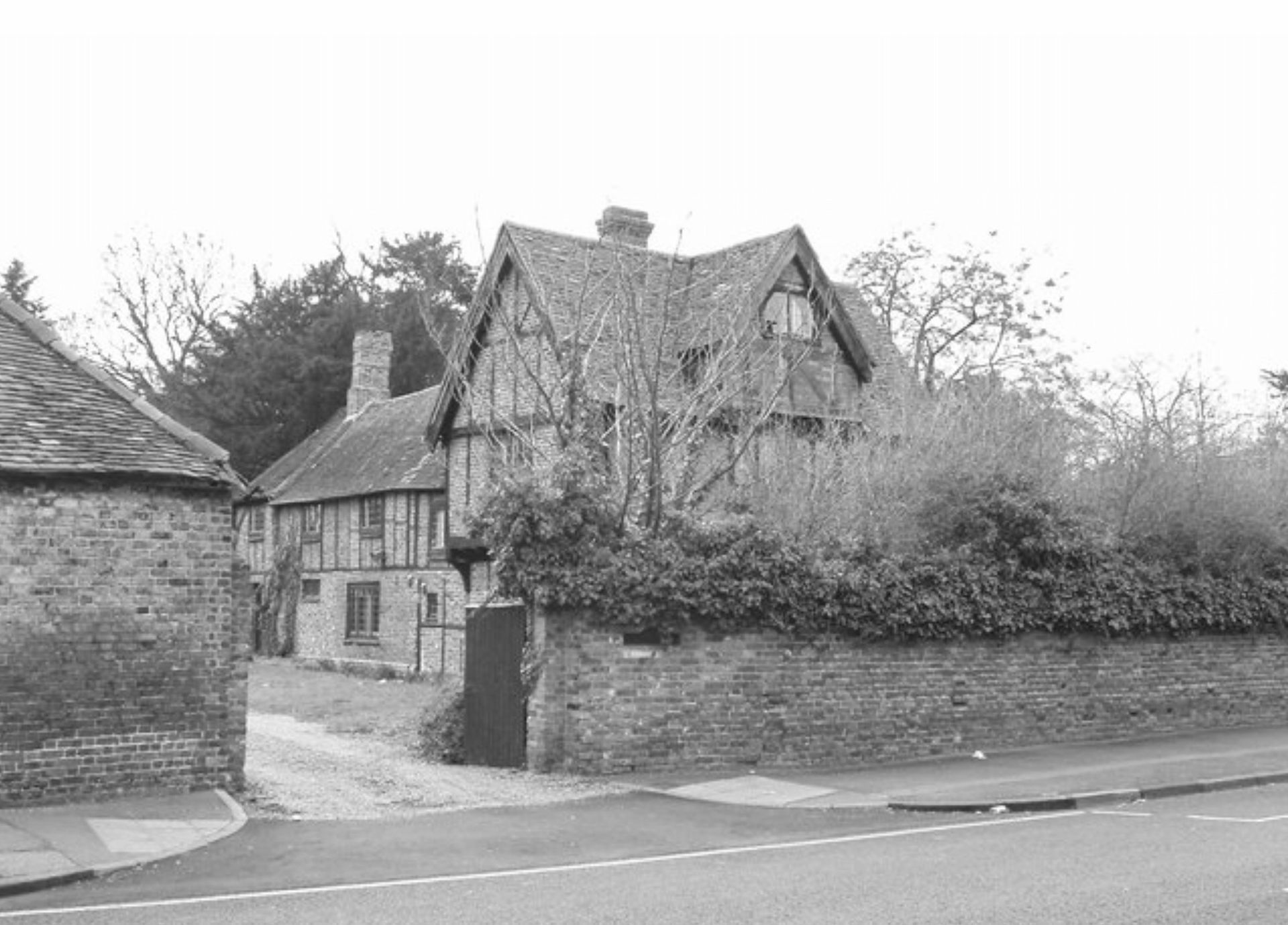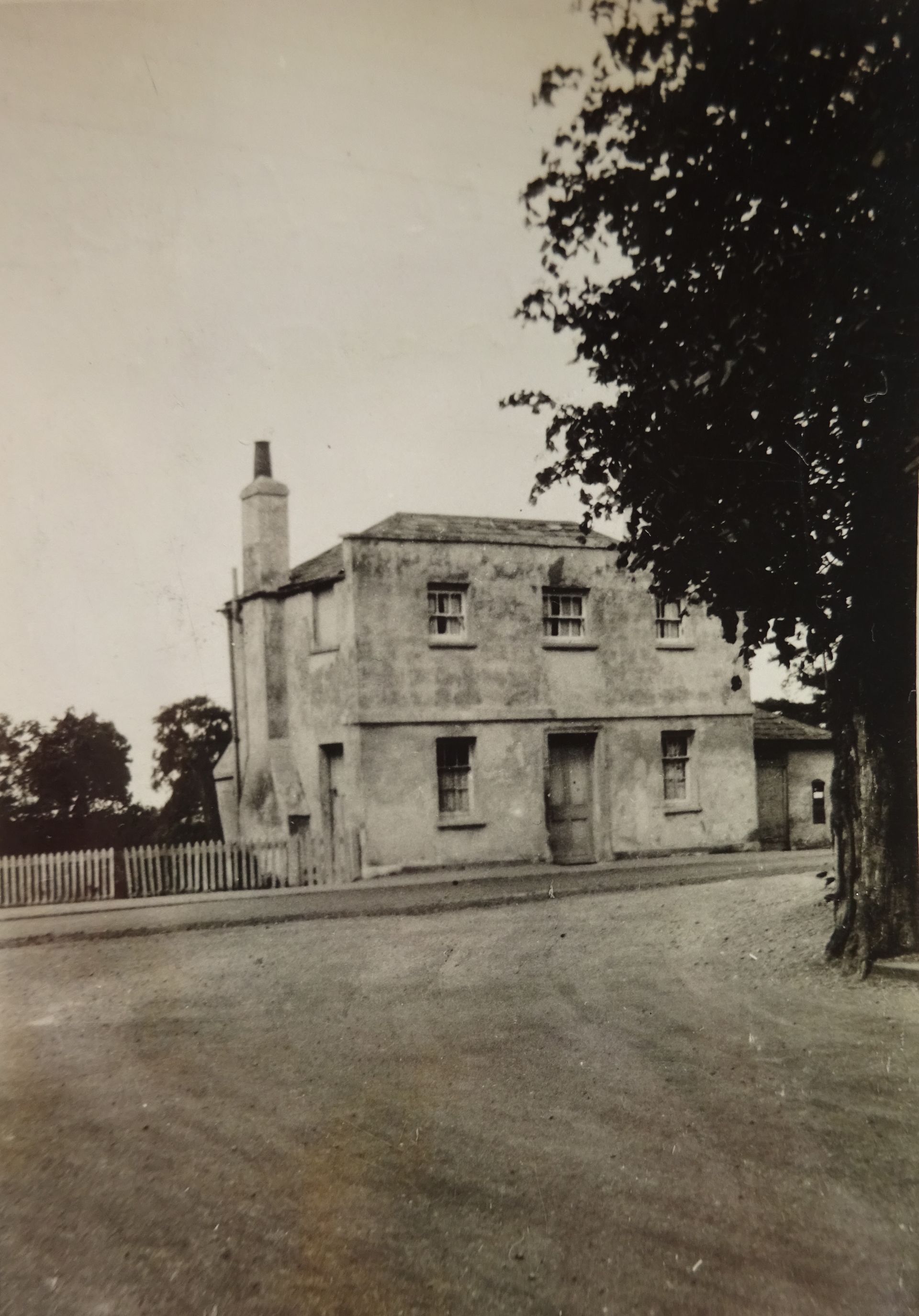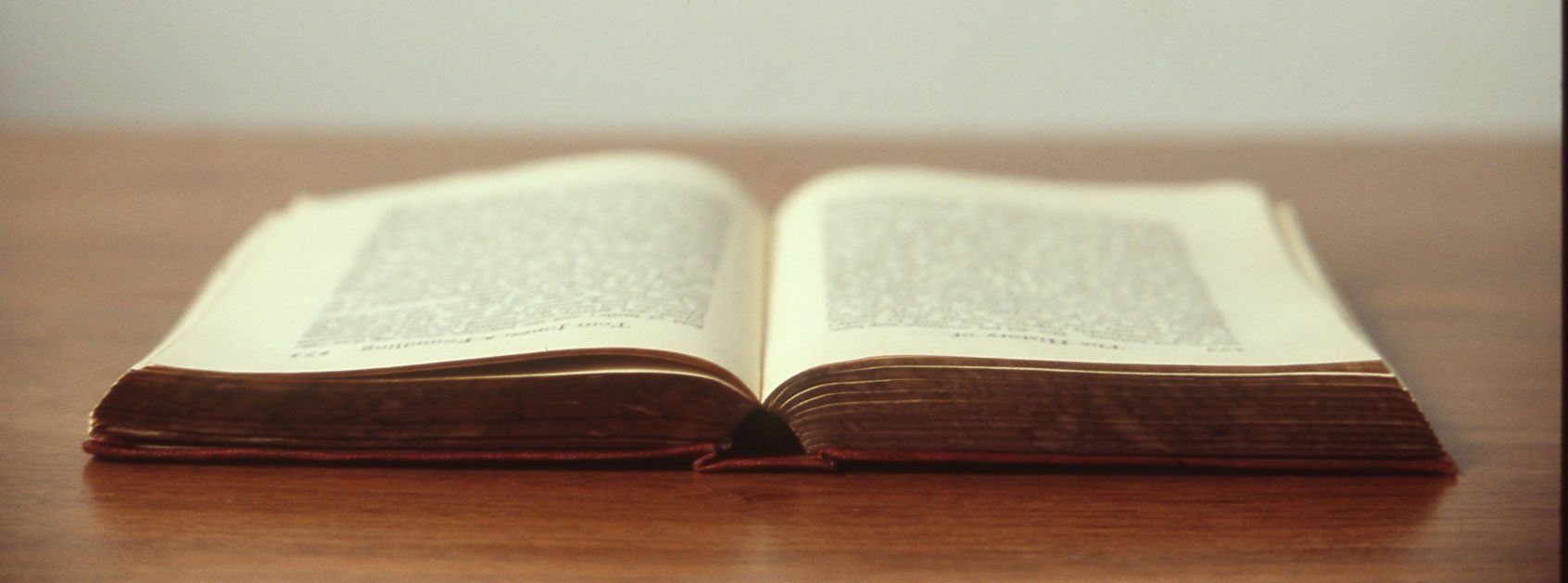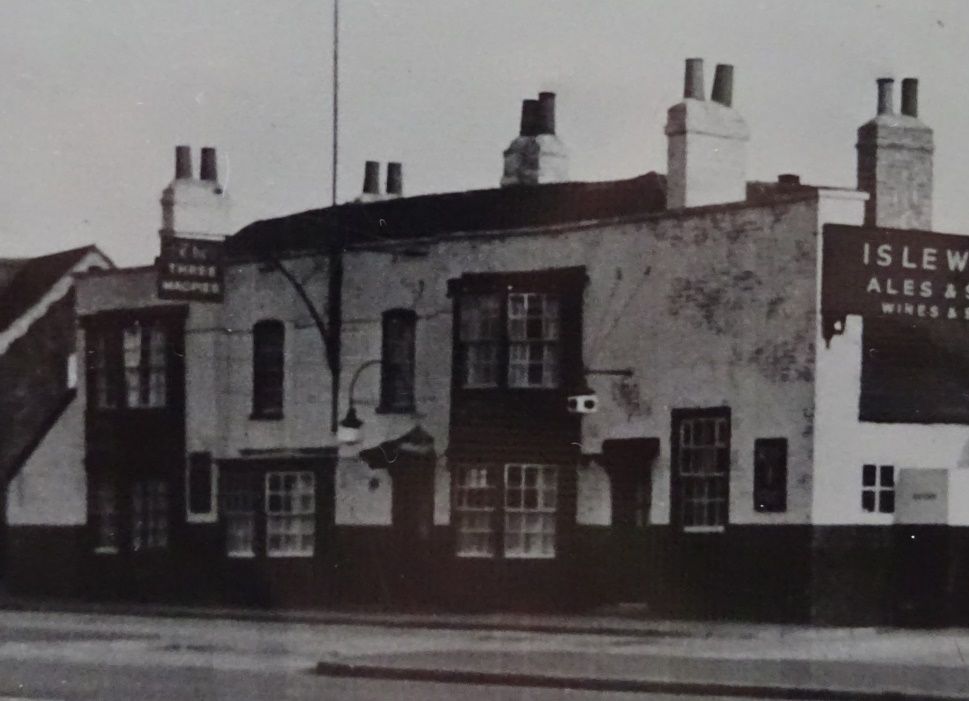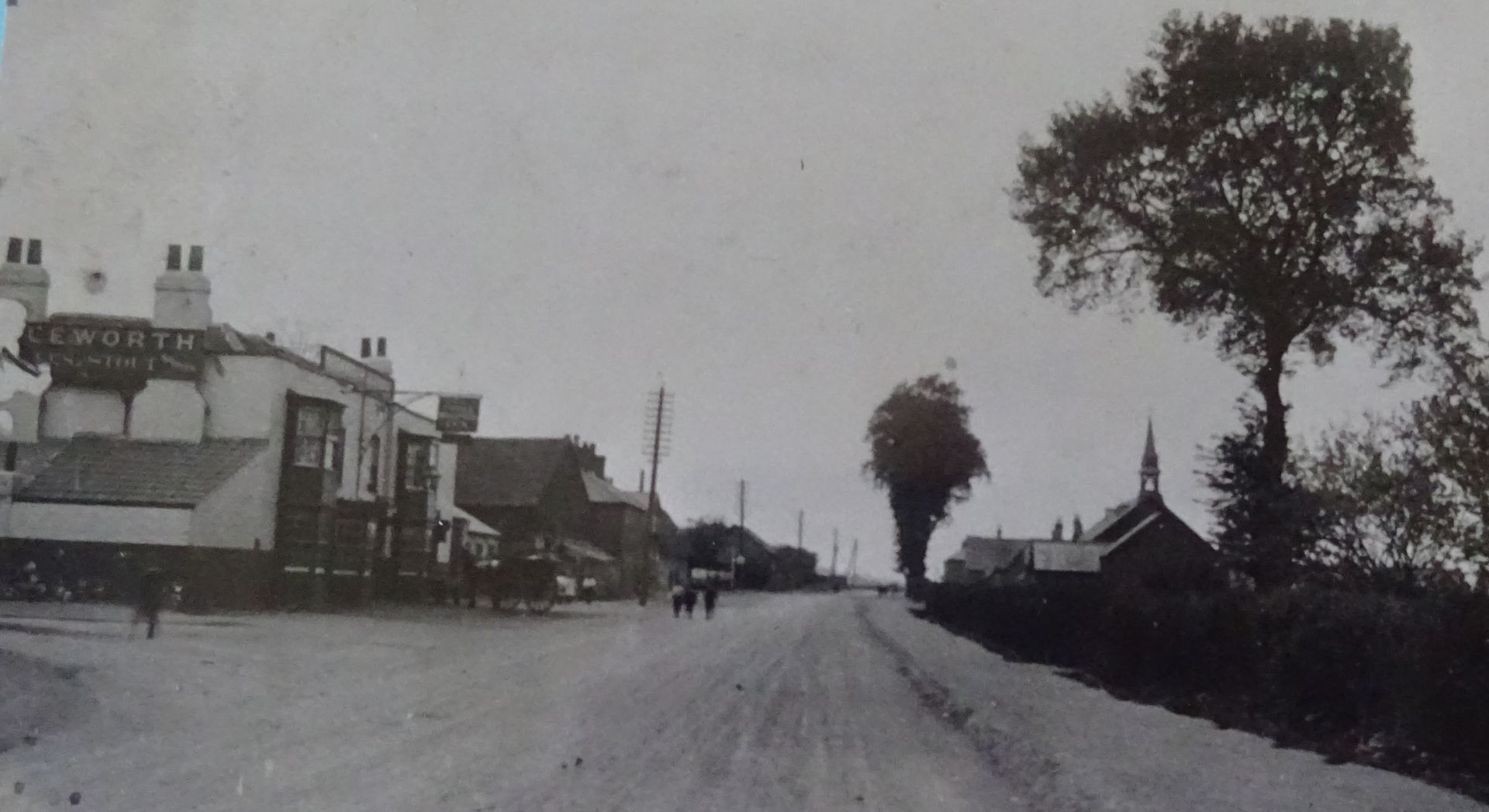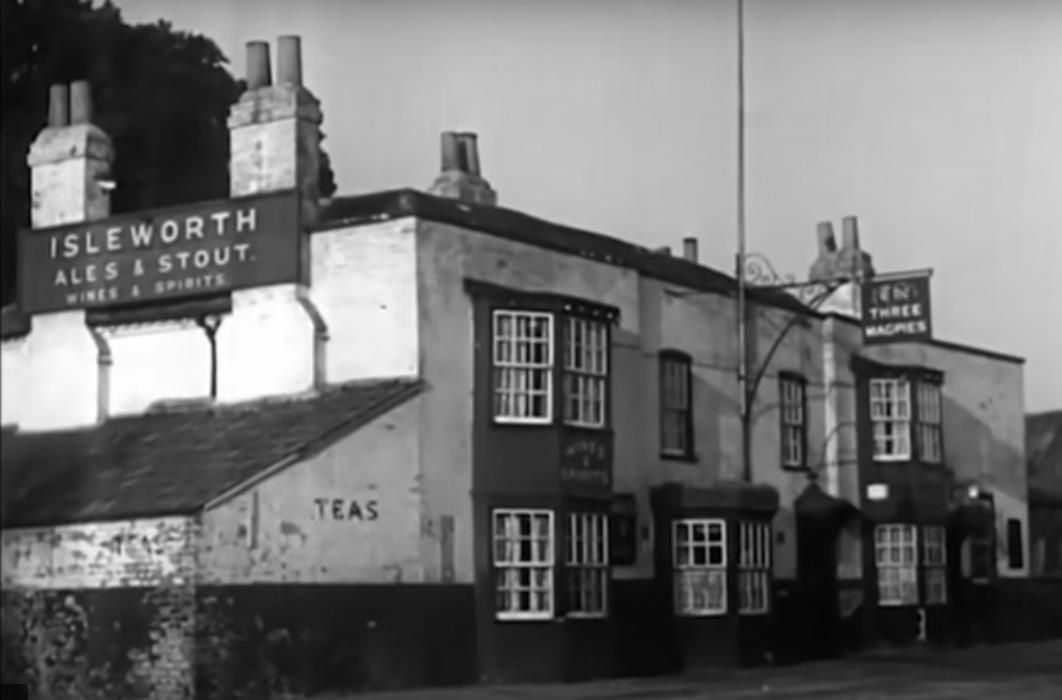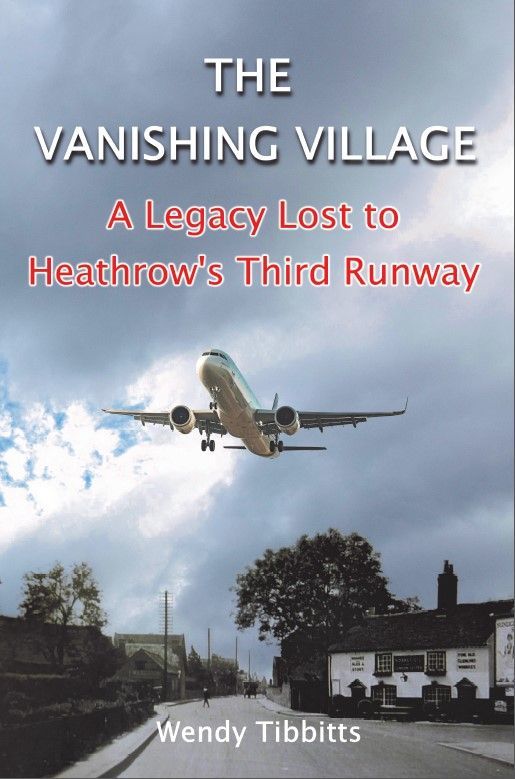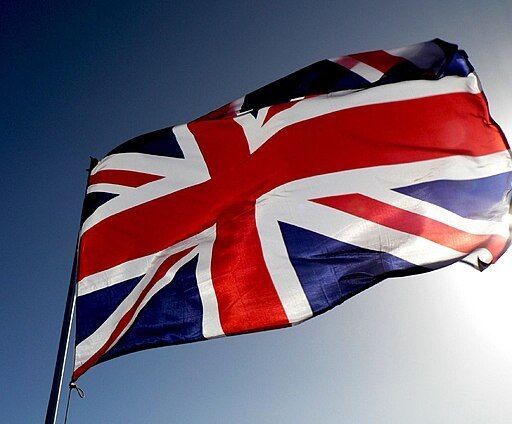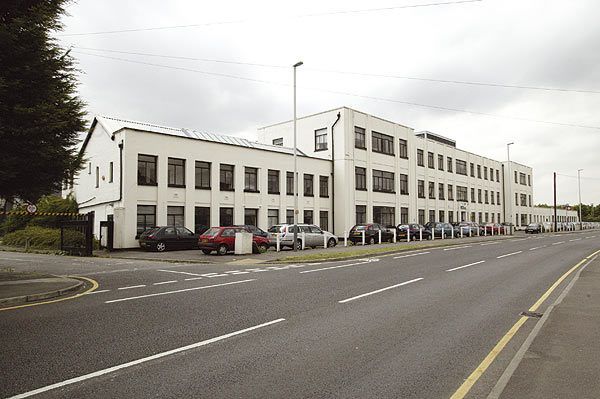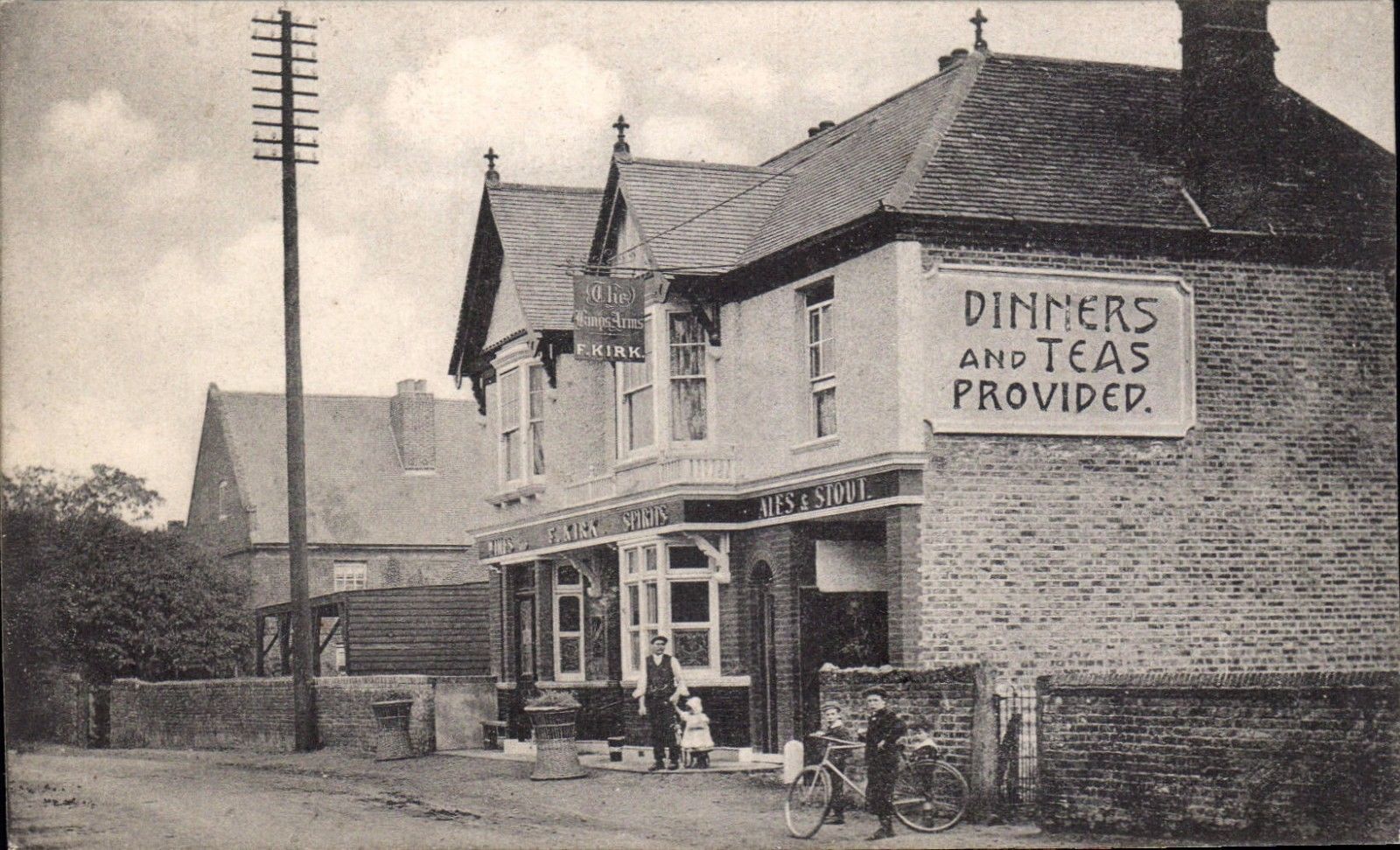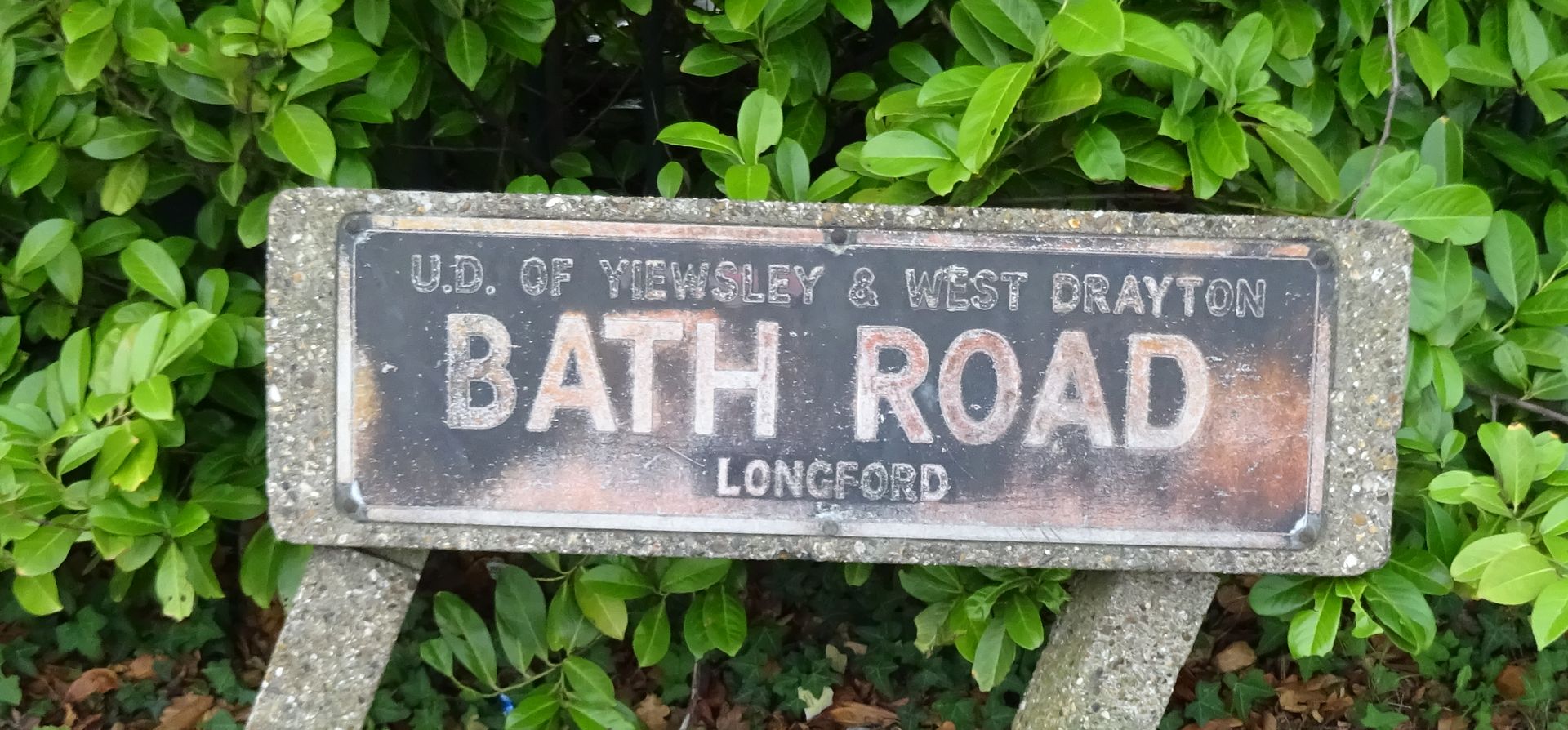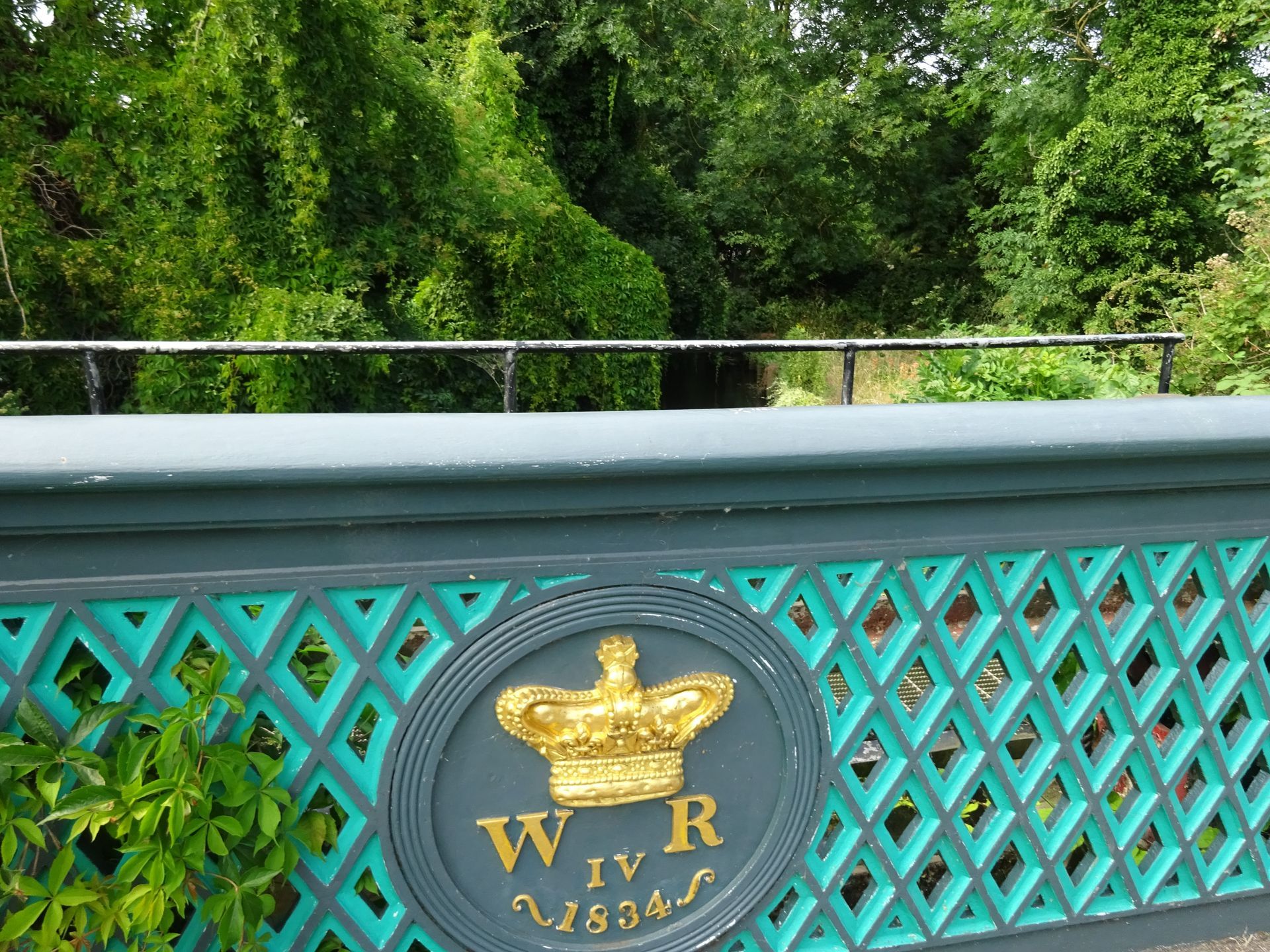The Three Magpies
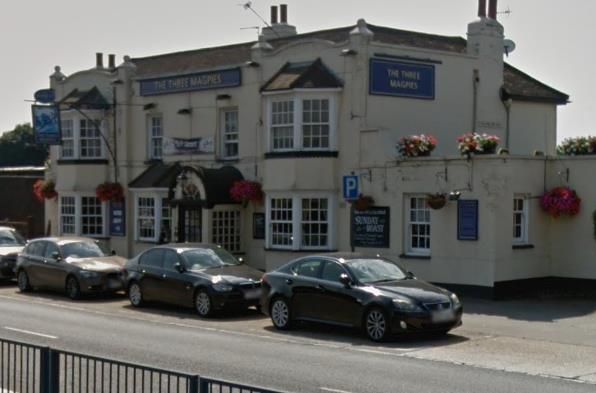
The Three Magpies is the last surviving building of the hamlet of Heathrow. It sits on the southern side of the A4 at Harmondsworth, near the junction with Sipson Lane and Nene Road, isolated between two demolished building sites and surrounded by a road network.
Isolation is nothing new for this building. In the eighteenth century this site was on the edge of the notorious barren wastes of Hounslow Heath, where footpads and Highwaymen lurked to relieve travellers of their valuables. Once the coach travellers arrived at the lone inn they felt relief that the danger was past, but there were still hazards. Lurking in the smoky corners of the inn, were shady characters listening to conversations to pick up clues about future victims. The Bath Road was the busy turnpike road to Windsor, Reading, and Bath and although its dirt surface was reinforced with gravel dug from the fields, it could become rutted with mud in the winter and dusty in the summer all of which slowed the carriages and made them vulnerable to attack. Today, the pub (800 Bath Road) continues to provide food and drink to the travelling public just as it did when the customers were enduring the bumpy, rattling, two-day journey to Bath.
One writer suggested that The Three Magpies was built in the 17th century[1], although British History Online say it was built in the eighteenth century which is a more likely date. It was called the Three Pigeons until 1765[2], to distinguish it from the building a few yards away which was a low-level thatched beerhouse called The Magpies, said to have possibly existed since 1216.[3] Both inns were always run separately with a different class of customer favouring one or the other, but they were collectively known as the Magpies. The Old Magpies was demolished to make way for the Heathrow underpass in 1951. For this blog we will just consider the Three Magpies and the fortunes of its licensees.
The landlords were many and varied. Some enterprising and industrious, others were less so. There was an auction in 1792 at the building, which included two stables, a large yard, and a garden. John Meads, the landlord, had just died and his executor, Thomas Jarvis, was selling the inn on behalf of his legatees. John Meads had been landlord since at least 1782 when he was paying a modest amount of land tax, but over the years he had taken advantage of the agricultural depression and had been buying pieces of land from local farmers. By 1789 he was paying enough land tax to equal some of the major landowners in the parish.
At this time landlords were long-term owner/occupiers. In 1799 thirty carriers a week travelled along Bath Road from London to Reading, and fifty-five coach services, but transport systems were evolving. By 1836 Welshman Jonathan Evans was insuring the Three Magpies, but as the public found rail travel quicker and more comfortable than coach travel, trade was dropping off. The nearest station was West Drayton on the Great Western Region and it can be no coincidence that soon after the station opened in June 1838, Evans was looking for other sources of income. He placed an advert in the London papers for “Lovers of Angling” to visit his spacious pleasure grounds where they could fish in his large well-stocked fish pond and afterwards the “piscatory visitor could rely on any fish they caught to be delicately cooked”.[5] Evans was still there in the 1841 census when he was 46 and running the pub with five live-in servants.
Sometime before 1844 Charles Morton became landlord of The Magpies. Formerly chief Huntsman to the Earl of Derby, he had kept several inns including the Magpies before being robbed by his housekeeper in London of a considerable amount of money and subsequent law suits wiped out the little money he had left. He was found hanged in a barn in Kent, aged 76, and the inquest Jury’s verdict was “that the deceased had destroyed himself”.[6] There might have been another factor involved in his suicide for in March 1843 a little boy aged between three and four years was visiting the landlord of the Magpies Inn and whilst playing in the garden he fell into the pond and drowned.[7]
The search for more sources of income for the Three Magpies led the next landlord, Mr Greatrex, to use his influence within the sporting fraternity.[8] He was a sportsman himself and the growing sport of pedestrianism (distance walking or running races) was attracting participants who could earn good prize money and spectators who would place wagers on the winners. Now that the carriage trade was reduced, many races, of all kinds, took place on the wide, flat Bath Road, where distances could be accurately measured between the milestones. Mr Greatrex , however, developed the facilities further. On his six acres of land behind the pub, he built a running track that circled the fishing lake. Some long-distance road races would finish on the track and to keep the spectators entertained, while they were waiting for the competitors to arrive, Greatrex arranged novelty races such as hopping and running backwards.[9] In fact any sport that could be wagered on took place at or around The Three Magpies. These included steeple-chasing (on horse-back), bare-knuckle fighting, trotting, as well as being the regular meeting place for the Royal Staghounds and other Hunts.
Mr Neville Brown was the licensee when on Tuesday 8th January 1850 the Three Magpies had an unexpected visit from 30 to 40 fellow sporting licensed victuallers who were there to witness one of their number attempt to walk 20 miles in under four hours for a £50 prize. There was heavy betting on the outcome and the task was accomplished with 12 minutes to spare. About 25 of the group then sat down to a spread that was “a credit to mine host Brown who had no notice of the affair coming off”.[10] The unexpected visitors did not disperse until nine in the evening. Neville Brown made further improvements to the running track, extending it to 440yds (a quarter mile) for the Grantham v. Levett match in March 1850. Bell’s Life in London and Sporting Chronicle described the enclosed ground as a “delightful spot; and the sprint and quarter of a mile courses have been put in excellent order by Mr Brown.”[11] However in July 1850 Brown was declared bankrupt caused by a mixture of overspending and allowing too much outstanding credit to debtors.[12] By January 1851, the Magistrates at Uxbridge had removed Neville Brown’s licence from the Magpies Inn and transferred it to Mr Haywood.[13] It must have been around this time that the pub was acquired by the Isleworth Brewery because the tenure of the licensees became shorter as they were moved around between the Brewery network.
George Williams, originally from Gloucestershire was licensee when in 1870 he was summoned for allowing people to drink in the bar before 1pm on a Sunday. He pleaded guilty and was fined £2 at the Uxbridge Petty Sessions.[14] Two years later he was present when Edward Tillier broke into the pub via the skittle alley between midnight and 1am. Tillier took off his boots and carrying a lighted candle entered the bar area. However, Tillier’s big mouth had been his undoing and laying in wait for him was local policeman, William Belch, who had overheard the thief planning his break-in. PC Belch had informed George Williams, and they had both stayed up to catch him red-handed. Tillier was found guilty of breaking into the inn and even though it was his first offence, he was sentenced to three months hard labour.[15] Williams remained at The Three Magpies until at least 1878 when he and his wife, Jane, moved to nearby Ashford and opened a grocery shop. He died in Colnbrook in 1901 aged 79.
Leonard Sayer, a former Butler at Mount Stuart House, Scotland, who had been born in Canterbury, Kent, was landlord at the Three Magpies in 1889, and was there for at least 3 years.
By 1894 Alfred Henry Mays was landlord when he was accused of assault by a customer who had been barred from the pub. One evening on 3rd January Thomas William Luckett tried to buy a drink, and being refused was asked to leave. He was roughly ejected from the building by the barman, Arthur Albert Mays whom he alleged assaulted him. At the trial, after hearing the evidence, the magistrates deliberated before finding Alfred Mays, the landlord, not guilty, and fined Arthur Mays £3 of which £2 would go to the victim for his injuries.[16] By 1899 Edward Varnell had taken over the licence. Varnell was born in the Strand, London, and as a young man earned a living as a hammerman in a ironworks in Southwark, later buying his own greengrocery shop in Battersea. However his London-born wife did not seem to relish being the wife of a country publican and stayed in London running a Boarding House when he took over the Three Magpies. Between 1904 until after WW1 there were a series of caretaker publicans: Charles Henry Finch, a former Army Quartermaster Sergeant in the Army Service Corp, Henry Wheeler and David Wiggins. [17]
It was not until George Rawlings took over the licence around 1924 that the pub had a long-term landlord again. Rawlings had already spent 20 years as the landlord of the Eagles Arms, Hammersmith, and was to stay at The Three Magpies for another seventeen years. During that time he established himself in the community. He was connected with many local groups including St Saviours church, The British Legion, Licensed Victuallers association, and was a Freemason. During WWII he was an ARP warden. His wife, Caroline, died in 1931 and was buried in Harmondsworth cemetery. A year later George Rawlings married, in Marylebone, the widowed Alice, and she helped him run the pub. In January 1934 the deep fishing pond behind the pub almost dried up and 500 fish were lost. This was a financial blow for Rawlings who had 30-40 regular anglers using the pond. The cause was unknown, but Rawlings thought it was caused by excavation work in the area.[18] During his tenure the clubroom of the pub was a popular venue for charitable Whist Drives. There was also a darts team, a football team, and a Thrift Club. When George Rawlings died in 1941 his wife, Alice, took over the licence.[19]
Alice Rawlings was not the only female licensee in the area. With many men at war the women were keeping the pubs open. Down the Bath Road, at the Coach and Horses at Harlington Corner, the licensee was Alice Jeffreys. She had live-in help in the pub from H.W. “Bill” Sell and his wife. Bill Sell was also working part-time as a commercial traveller for a bookseller. In 1945, just as Bill Sell was approaching his 70th birthday and looking forward to a peaceful retirement, the licence of the Three Magpies became available and he decided this "country" pub would suit his retirement plans. By then the distant farmland to the south of the pub, was in the process of being cleared and concrete runways constructed, for what was thought to become a military airfield. The construction crew would make use of The Three Magpies for their breaks, and the trade from the lorries and cars using the Bath Road made up for the loss of takings from the farm labourers on the requisitioned Heathrow Farms. It must have come as a pleasant shock to Bill Sell when the following year London’s first civil airport opened and suddenly the pub was in demand by the airport workers and passengers alike who were using the temporary airport buildings (ex-Army marquees), along the edge of the Bath Road adjacent to the Magpies. It soon attracted a cosmopolitan clientele speaking many languages and ten years later Bill Sell was still serving drinks to air and road travellers who stopped at his pub.[20] It was during Bill’s tenure that the remaining 4.5 acres of land behind the pub - having long been renowned for its sporting activities - was requisitioned by the Government in 1948 for the use by the airport.[21] Bill Sell continued as landlord until his death in 1959.
Since the airport opened to the public in 1946 the area it covers has increased many times and the once remote pub is now surrounded by hotels. But it is a survivor. Even if the third runway gets built it is not scheduled for demolition, but will be stranded between the northern and third runways with no passing trade. There is every hope that the airport expansion plans will be quietly forgotten, but a more worrying prospect is the fact that Greene King are considering closing many of their pubs. It will be very sad if we lose this ancient pub which continues to be a welcome place for a drink and a good meal.
This is just a glimpse of the Three Magpies long history. The landlords might have shaped its story, but so did transport, people and culture. The fascinating 300 year-old history of the Three Magpies is soon to be published in paperback.
[1] Robbins, Michael, Middlesex, (Chichester, 2003), p.279. Built 18th Century according to British History online. See footnote 7.
[2] London Borough of Hillingdon, Review of Local List of Buildings of Architectural or Historic Importance, 2010. No. 219.
[3] Uxbridge & W. Drayton Gazette - Friday 09 December 1949
[4] Morning Advertiser - Thursday 13 May 1824
[5] The News (London) - Sunday 26 August 1838
[6] Kentish Mercury - Saturday 26 October 1844
[7] Windsor and Eton Express - Saturday 11 March 1843
[8] Bell's Life in London and Sporting Chronicle - Sunday 30 April 1848
[9] The Era - Sunday 07 May 1848
[10] Bell's Life in London and Sporting Chronicle - Sunday 13 January 1850
[11] Bell's Life in London and Sporting Chronicle - Sunday 24 March 1850
[12] Gloucester Journal - Saturday 13 July 1850
[13] Bucks Herald - Saturday 11 January 1851
[14] Windsor and Eton Express - Saturday 23 April 1870
[15] Windsor and Eton Express - Saturday 09 March 1872
[16] Middlesex County Times - Saturday 27 January 1894
[17] Ancestry.co.uk 1911 Census
[18] Uxbridge & W. Drayton Gazette - Friday 26 January 1934
[19] Uxbridge & W. Drayton Gazette - Friday 26 September 1941
[20] Daily Herald - Thursday 16 August 1956
[21] Uxbridge & W. Drayton Gazette - Friday 17 September 1948
For more historical stories about Longford, and Harmondsworth read
“Longford: A Village in Limbo” by Wendy Tibbitts.
For a Look Inside option for this book go to https://b2l.bz/WUf9dc
